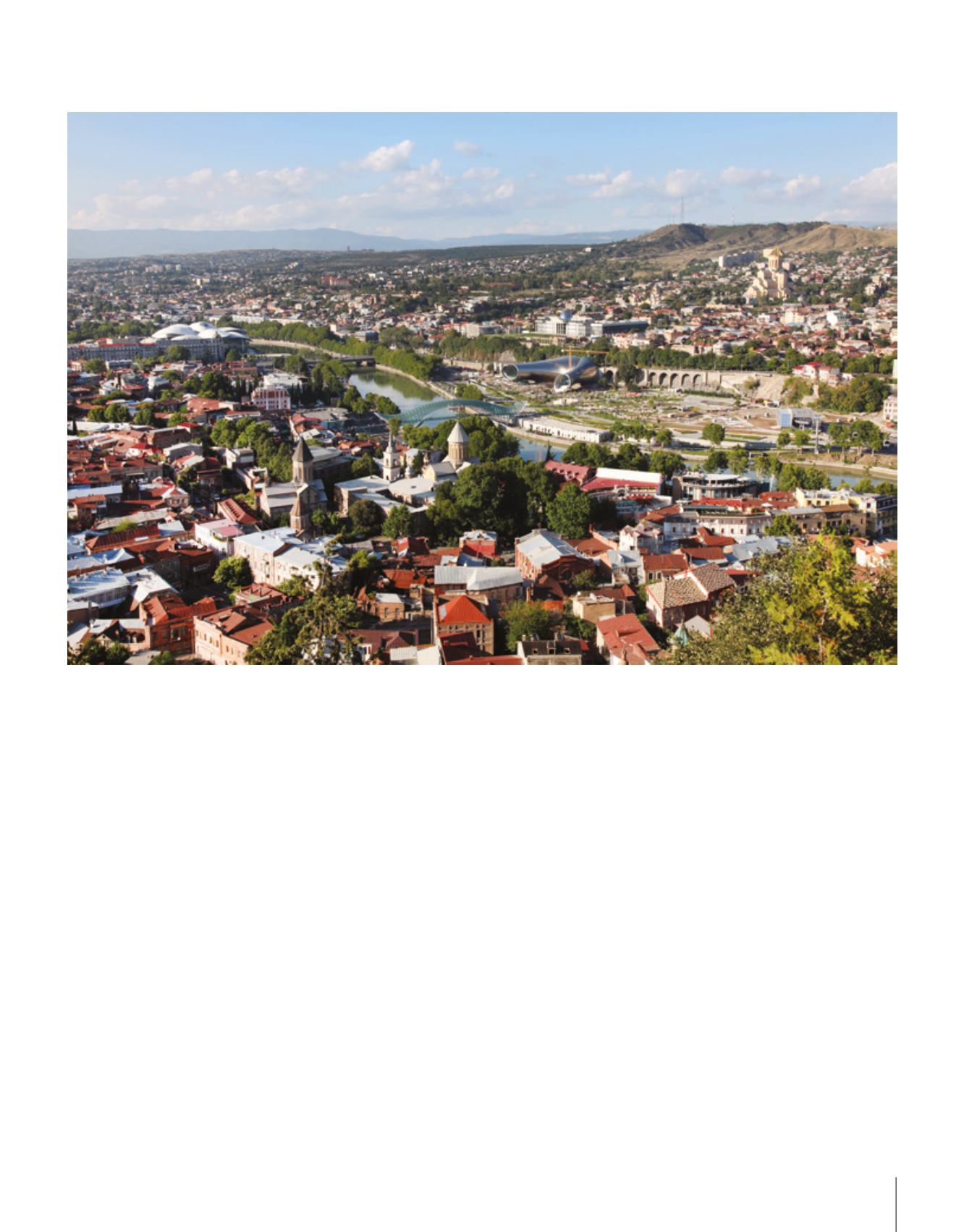
87
Gürcistan'ın başkentinde ilk
yerleşimin izleri M.Ö. 4000'e
dayanıyor. Tiflis şehrinin
kuruluşu ise M.S. IV. yüzyılda.
Efsaneye göre Gürcü Kral
Vahtang Gorgasal vakti
zamanında sıkı bir ormanla
kaplı olan Somolaki tepesinin
eteklerinde ava çıkar. Uçan
bir sülünün peşine atmacasını
salar. İkisi birden gözden
kaybolurlar ve sonrasında Kura
nehrine yakın bir noktada ikisi
de bir sıcak su birikintisi içinde
ölü olarak bulunurlar. Yeni
başkentini sıcak su kaynağı
olan bu kıyıda kurmaya karar
veren kral da şehrin adının
“Sıcak Su” anlamına gelen
"Tbilisi" olmasını emreder.
Kafkasya'nın karışık tarihine
girmek niyetinde değilim,
ancak Tiflis'in kozmopolit
yapısını anlayabilmek için
şehrin uzun yüzyıllar boyunca
"İpek Yolu" üzerinde yer aldığını
ve zaman zaman bağımsız
olan Gürcü krallıklarına
başkentlik yapmanın dışında
bir dönem Osmanlı ve İran
arasında el değiştirdiğinden
bahsetmeli. Ve tabii sonrasında
gelen Çarlık Rusya’sı ve SSCB
dönemi ile Perestroyka'dan
da... SSCB döneminde birliğin
önemli kültür başkentlerinden
biri olan Tiflis özellikle
Gürcü asıllı lider Stalin'in
de yatırımlarıyla mimari ve
gelişmişlik açısından dönemin
en güzel kentlerinden biriymiş.
Eski Sovyet rejimi yıkılıp
birlik dağılmış, Gürcistan
ülke politikası olarak yüzünü
Batı’ya çevirmiş olsa da
şehirde halen Rus kültürünün
önemli etkisi bulunduğunu
söylemek mümkün. Nüfusun
ezici çoğunluğu Gürcü, ancak
ülkede yüzden fazla etnik grup
bulunduğu belirtiliyor.
Traces of first settlements in
Georgia date back to 4000 B.C.
The establishment of Tbilisi is
in 4th century A.D. Legend has
it that Georgian King Vahtang
Gorgasal goes hunting in the
foothills of the Somolaki hill
covered with dense forests.
He releases his hawk to chase
a flying pheasant. The two
disappear and they are later
found dead in a puddle of
warm water near lake Kura. The
king decides to establish his
new capital city on this coast
with springs of warm water
and commands its name to be
“Tbilisi” meaning “Warm Water”.
I do not want to go into the
complex history of Caucasia,
however in order to understand
the cosmopolitan structure of
Tbilisi it should be noted that
the city has been located for
centuries on “Silk Road” and that
it has changed hands between
the Ottoman and the Iranians in
addition to being the capital city
of the Georgian kingdom. And
of course of Czardom Russia
and Perestroika of USSR…
Tbilisi was one of the important
cultural capitals during the USSR
period and it is said to be one of
the most beautiful cities of the
period in terms of architecture
and development with the
investments of the Georgian
origin leader Stalin. Even though
the old Russian regime fell apart
and the union is dispersed
and even though Georgia has
turned its face towards the west
in terms of country policy, it is
possible to say that the city is still
heavily influenced by Russian
culture. The great majority of the
population is Georgian, however
it is stated that there are more
than hundred ethnic groups in
the country. A frequently told
Caucasian belief has it that God
has first placed the nations on
the continents and towards the
end has just scattered whatever
is left in his hand over Caucasia.
Tbilisi is the most important
city of Southern Caucasia and
has received its share greatly
from this diversity. In addition to
Tiflis
Tbilisi


